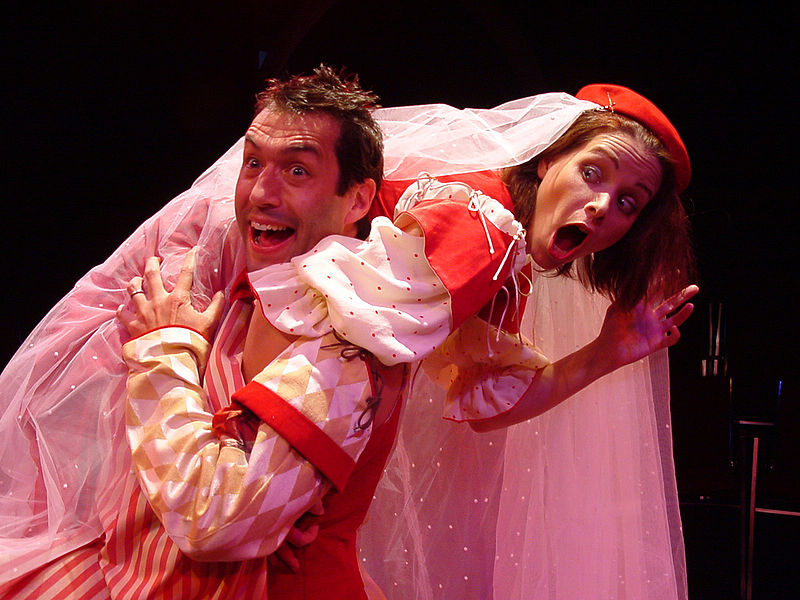Difference Between Farce and Comedy
Table of Contents
Key Differences – Farce vs Comedy
Comedy is a dramatic work that makes people laugh. Some comedies aim only to create laughter whereas some aim to expose and criticize the vices and follies of the society while creating laughter. Farce is a type of comedy that is characterized by highly exaggerated and comic situations and crude and one-dimensional characterizations. It has no other aim than creating laughter. This is the key difference between farce and comedy.
What is a Farce?
A farce is a low form of comedy. It can be defined as a comic dramatic work using buffoonery and horseplay and typically including crude characterization and ludicrously improbable situations. As this definition suggest, farce involves exaggerated and funny situations and one-dimensional characters. The plot of a farce may often contain many twists and random events, including mistaken identities and misunderstanding. This type of comedies relies on deliberate absurdity, physical humor, bawdy jokes, etc. to create humour. The main aim of a farce is creating laughter and entertaining the audience.
Farces can be created for both theater and cinema. Films like “Home alone”, “The Three Stooges”, “The Hangover” can be termed as farces. Farcical plays include William Shakespeare’s, “Comedy of Errors”, “Taming of the Shrew”, Joe Orton’s “What the Butler Saw”, Michael Frayn’s “Noises Off”, Marc Camoletti’s “Boeing-Boeing” are some examples of farcical plays.

What is a Comedy?
A comedy is a dramatic work that is light and often humorous and that usually contains a happy ending. A comedy is basically a dramatic work that makes its audience laugh. There are two basic types of comedy, which can be classified as high and low comedy.
High comedy is characterized by subtle characterization, witty dialog, irony and satire. It is sophisticated in nature and focuses on the inconsistencies and incongruities of human nature. The aim of this type of comedy is not just to entertain the audience; it also aims to act as a social criticism. Satire and comedy of manners are examples of high comedy. Literary work like Alexander Pope’s “The Rape of Lock,” Oscar Wilde’s “The Importance of being Earnest” and “Lady Windermere’s fan” are examples of high comedy.
Low comedy is characterized by humorous or farcical situations, absurdities, physical action, and often bawdy or vulgar jokes. It is not serious in nature and does not appeal to the intellect. This type of comedy only aims to entertain the audience; it has no higher purpose. Farce, parody, and burlesque are examples of low comedy.

What is the difference between Farce and Comedy?
Definition:
Farce is a lighthearted comedy typically including crude characterization and ludicrously improbable situations.
Comedy is a dramatic work that is light and often humorous and that usually contains a happy ending.
Type of Comedy:
Farce is a type of low comedy.
Comedy can be classified as high comedy and low comedy.
Aim:
Farce aims to make the audience laugh.
Comedy may expose vices and follies of the society while creating laughter.
Techniques:
Farce uses absurdities, vulgar jokes, physical actions to create laughter.
Comedy can use wit, satire, irony, as well as slapstick and farce to create laughter.
Image Courtesy: “Audience enjoy Stallman’s jokes” By Wikimania2009 Damián Buonamico – originally posted to Flickr as Audience enjoy Stallman’s jokes (CC BY 3.0) via Common Wikimedia “ShrewKatePetrucio” By Smatprt – Own work (CC BY-SA 3.0) via Commons WikimediancG1vNJzZmivp6x7pbXFn5yrnZ6YsqOx07CcnqZemLyue8OinZ%2Bdopq7pLGMm5ytr5Wau26ywKuanmWRo7FuwtJmmqillZnGcA%3D%3D